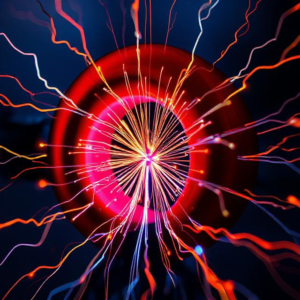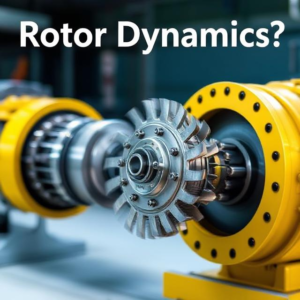What is AC (Alternating Current)?
- AC (Alternating Current) is a type of electricity where the flow of electric charge periodically changes direction.
- In simple words: In AC, the electric current flows first in one direction and then reverses direction, continuously moving back and forth.
- Example: The electricity that powers your home (from the power grid) is AC. It alternates its direction many times per second.
Why does AC alternate?
- AC changes direction because it’s generated by rotating machines like power plants’ turbines, where a magnet moves in a circular motion to produce electricity.
- Frequency: The speed at which the current alternates is called the frequency, and it’s measured in hertz (Hz). For example, in most countries, the standard frequency of AC is 50 Hz or 60 Hz, meaning the current changes direction 50 or 60 times per second.

AC Circuits
An AC circuit is a circuit where the electric current alternates (changes direction). In an AC circuit, we work with three main components:
- Resistors (R)
- These components resist or limit the flow of current. The resistance doesn’t change with AC and is measured in ohms (Ω).
- Example: Light bulbs in your house, which resist the flow of electricity and produce light.
- Inductors (L)
- Inductors store energy in a magnetic field when current passes through them. In an AC circuit, they oppose changes in current and cause the current to lag behind the voltage.
- Example: A coil of wire in an electric motor or transformer.
- Capacitors (C)
- Capacitors store energy in an electric field and release it when needed. In an AC circuit, they cause the current to lead ahead of the voltage.
- Example: A capacitor in a fan motor or an air conditioner.
Key Concepts in AC Circuits:
- Impedance (Z): The total opposition to current in an AC circuit. It combines the effects of resistance (R), inductance (L), and capacitance (C).
- Phase Shift: In AC circuits, voltage and current don’t always reach their maximum value at the same time. This difference in timing is called a phase shift.
Power in AC Circuits
In DC (Direct Current), power is simply calculated as:
- Power (P) = Voltage (V) × Current (I)
But in AC circuits, because the current and voltage alternate, the calculation is a bit more complex.
- Real Power (P): This is the actual power that is used to do work in an AC circuit, like lighting a bulb or turning a motor. It’s measured in watts (W).
- Apparent Power (S): This is the total power supplied by the source. It’s a combination of real power and the power stored in inductors and capacitors. It’s measured in volt-amperes (VA).
- Reactive Power (Q): This is the power that alternates back and forth and doesn’t do any useful work. It’s measured in volt-amperes reactive (VAR).
Power Factor:
- The power factor is a number between 0 and 1 that shows how efficiently the power is being used in an AC circuit. A power factor of 1 means all the power is being used effectively. A lower power factor means some power is wasted.
What is a Power System?
A power system is a network of electrical components used to generate, transmit, and distribute electrical power.
In simple terms: It’s the entire system that gets electricity from power plants to your home.
Components of a Power System:
- Power Generation:
- Electricity is generated at power plants using different energy sources like coal, gas, water (hydropower), wind, or nuclear energy.
- The electricity is generated as AC because it’s easier to transmit over long distances.
- Transmission:
- After generation, the electricity travels through high-voltage transmission lines. These lines carry the electricity over long distances.
- High voltage is used because it reduces energy loss during transmission.
- Substations:
- When the electricity reaches local areas, it goes through substations, where the voltage is stepped down (reduced) to safer levels for distribution.
- Distribution:
- Finally, the electricity travels through lower voltage distribution lines to reach homes and businesses.
- End Use:
- Once the electricity reaches homes, it powers your appliances, lights, and everything else that uses electricity.
Types of Power Systems:
- Centralized Power System: A large power plant generates and distributes electricity to a wide area, such as a city or region.
- Decentralized Power System: Smaller, local power sources (like solar panels or wind turbines) generate power for homes or small communities.
AC Power Systems: How They Work Together
In an AC power system, electricity flows from a central power plant through transmission lines to substations. From there, it’s distributed to homes and businesses through distribution lines.
Key things to know about AC power systems:
- AC is used because it’s easy to change the voltage levels (via transformers) for efficient long-distance transmission.
- The frequency (50 Hz or 60 Hz) tells you how often the current alternates direction, and it’s kept stable to ensure the system works properly.
Summary:
- AC Circuits:
- Alternating Current: The current alternates direction.
- Components: Resistors, inductors, capacitors.
- Power: In AC circuits, power calculation includes real power, apparent power, and reactive power.
- Impedance: Resistance to current flow in AC circuits.
- Power Systems:
- A power system is the network that generates, transmits, and distributes electricity to homes and businesses.
- It includes generation, transmission, substations, and distribution.











